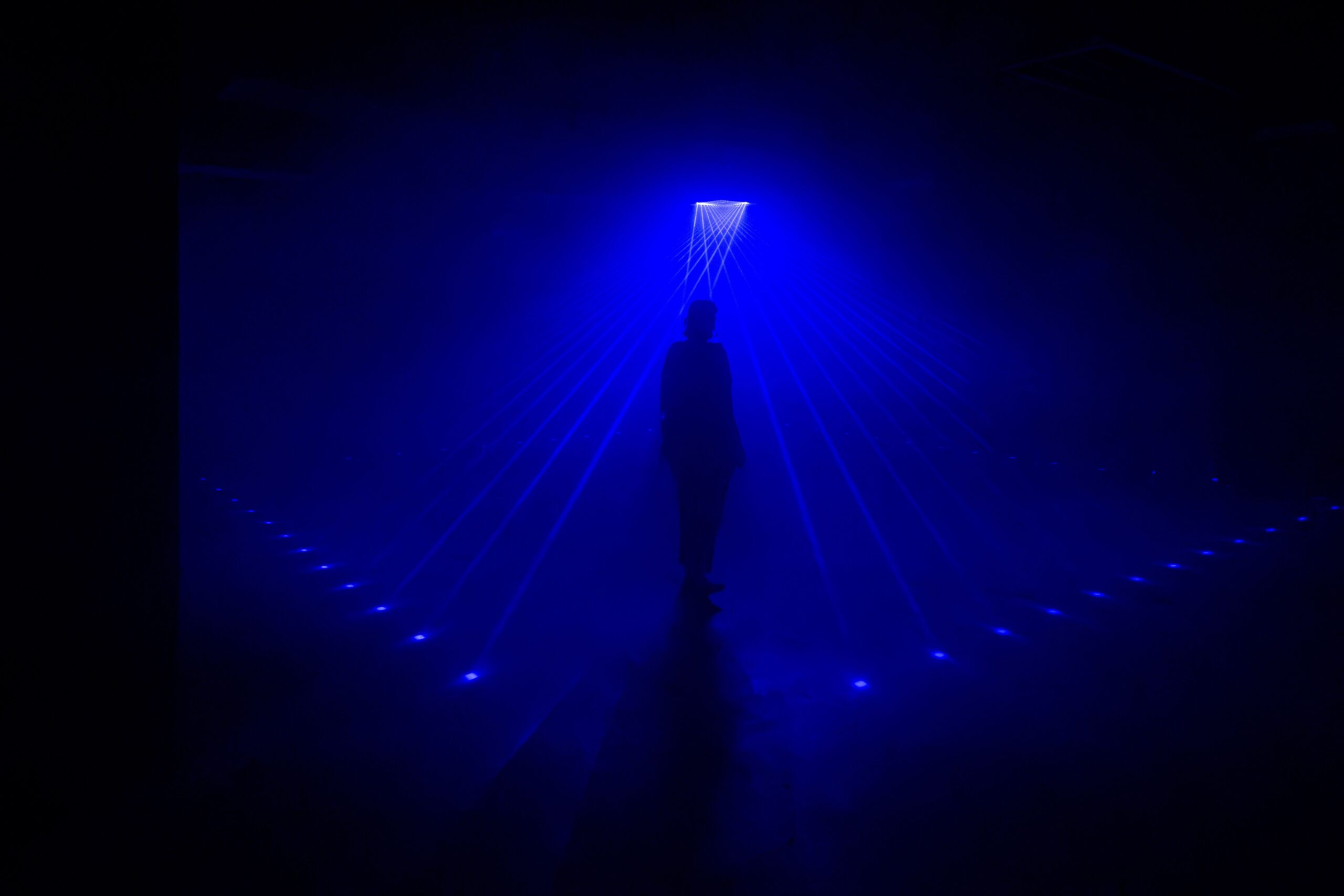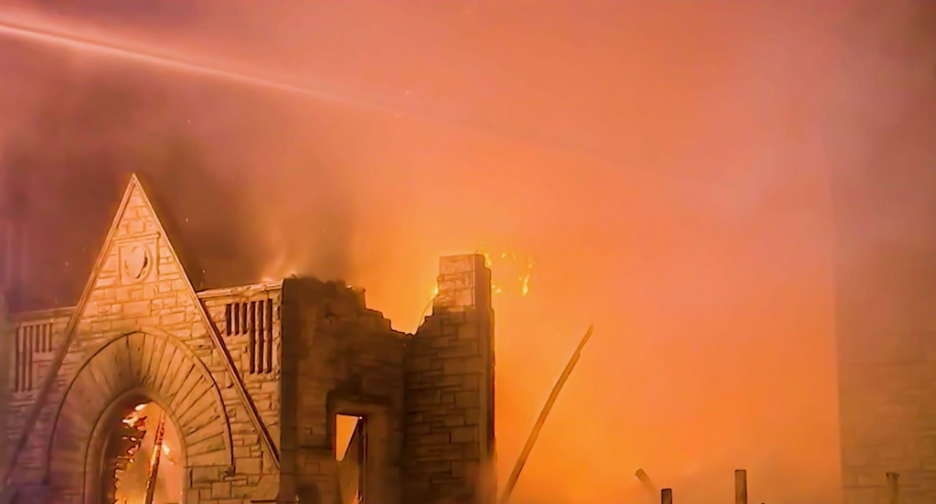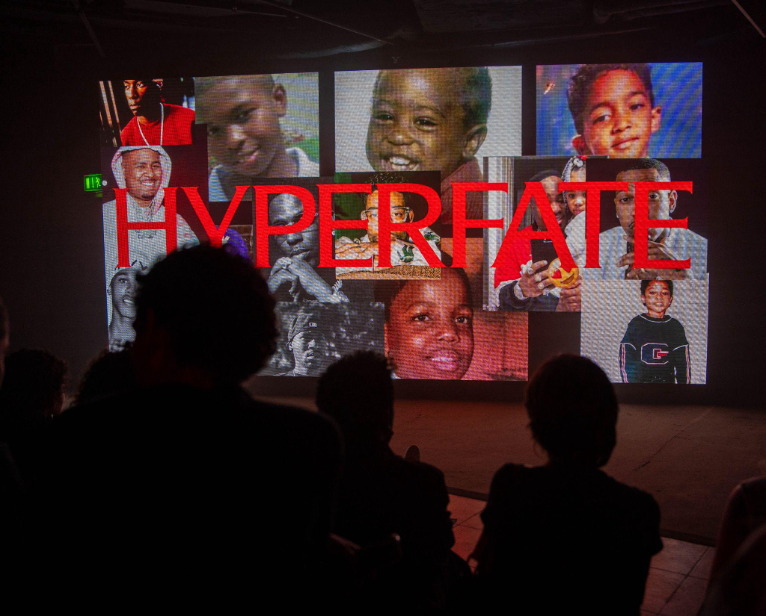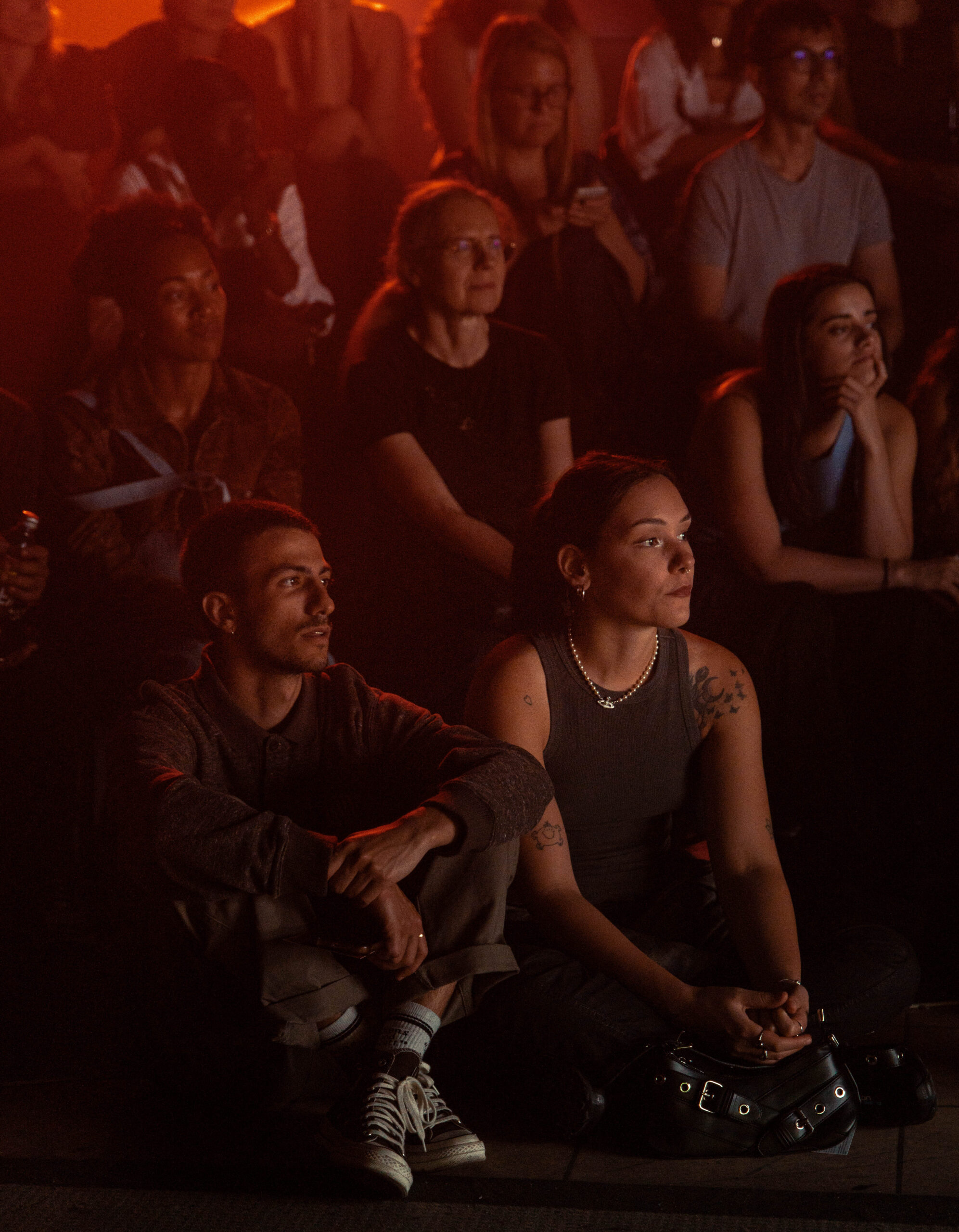Did These Stars Already Know Their Fate?: An Interview with Christelle Oyiri at Berlin Art Week


Before entering the party-cum-installation, I considered DJ, producer, and artist Christelle Oyiri’s choice to tether it to Nietzsche’s declaration ‘God is dead’—a phrase not only about the collapse of frameworks but also an offering to create new ones. Black communities, long subjected to racial subjugation, have historically met such voids by producing alternative practices and mythologies of survival. Oyiri’s installation Dead God Flow, which opened Berlin Art Week, extends this, transforming the absence of imposed authority into a space of collective agency, where black myth-making reconfigures both belief and futurity. It is a philosophically rooted journey that begins the moment you step into CANK’s elevator, doors closing upon reality.
The disappearance of the striking architectural design of the iconically abandoned C&A department store now home to event-venue CANK in Neukölln sets the scene. As the elevator descends into and opens its door upon Oyiri’s layered universe the legendary opening club scene in Hype Williams’ Belly—bathed in light, atmosphere thick with anticipation—comes to mind. Dead God Flow is not ordinary; it is an immersive body-high of video, sound, and light unfolding as the opening note of a meditation that platforms Black art and Afro futurism. In Oyiri’s submerged world of sound and image, symbolism and mythology, dualities shift in constant dialogue By inhabiting the abandoned department store—an architectural relic of failed capitalism—Oyiri reclaims a site of absence and transforms it into a space of presence. The work stages a confrontation between decay and renewal, amplifying diasporic voices and nightlife practice, the latter often unseen in institutional contexts. What emerges is not only an immersive sensory experience but also a form of spatial resistance: a reminder that creativity can rewrite the function and memory of the city itself.

“I also wanted to understand the essence of the music and art that I consumed growing up,” she explains during an interview the next day, “because a lot of the artists that I got to collaborate with have African American roots from the South, and my own relationship to my roots are very similar to theirs, because my mom is Caribbean, so she also comes from the Transatlantic slave trade. And, there’s communication, in my opinion, between the South, Caribbean, and Africa.”
At CANK, the room trembles, a voice echoing through the industrial building—Darius “Phatmak” Clayton’s voice cuts sharp and steady, carrying the narration of Hauntology of the OG like a spell. The eight-minute visual piece co-created with Ghanaian-Canadian photographer Nneka Wireko and narrated by the Memphis native poet and rapper and includes a scene of the burning Claybourne Temple—also known as the Memphis Pyramid. It was a striking place of worship with cultural significance, a place that brought social justice, survival, and marginalized histories, that sadly burned down in April 2025. The piece was born after a research trip to Memphis, Tennessee that she did together with Wireko. What made The Claybourne temple especially rich as an example was its trajectory: originally built as a monument, the pyramid was later transformed into a shopping mall. Having a narrator from Memphis, with memories of the site, shifts Oyiri’s piece from being a documentary‐style exhibition of symbols to one that explores what is lost, what survives, and what prophecies remain.
Born in Paris with Ivorian, Guadeloupean, and Martinican roots, Oyiri’s work is extremely interdisciplinary; she blends scenography, memory, sound, and identity practices that carry the weight of history, heritage, and resistance. Growing up in the suburbs of Paris she was encouraged at a young age to question authorities and the dynamics of power. And, later, her studies in philosophy and law led her to question both the self and the new systems of belief we create. In this instance, Nietzsche’s 1882 statement ‘God is Dead’ signals the collapse of old authorities, opening a space for Oyiri to imagine new systems of belief and meaning.

Oyiri’s installation comprises two video works Hyperfate (2022) and Hauntology of an OG (2025), both of which interrogate ideas of destiny, spirituality, and the cultural consumption of Black identity. Hyperfate compiles visual artifacts that reflect on society’s fixation with celebrity, grief, and martyrdom, centering on rappers such as Pop Smoke, Tupac, and Nipsey Hussle. Their shared trajectories and untimely deaths underscore a recurring narrative of loss, prompting Oyiri’s thought-provoking question: “Did these stars already know their fate?”
Our interview took place in one of the venue’s cramped ground-floor rooms. Oyiri arrived unfazed, in a black bodycon dress with a striking afro, carrying herself with quiet confidence — intellectual, relaxed, and fully in command of the space. “My idea when I built Hyperfate was to reflect on the idea of destiny, predictability, and probability,” she says about the piece. He arrived together with her producer and high-school friend Simon Gérard and curator Samantha Ozer.
Overall, her installation is multi-layered, emphasizing the importance of understanding the roots of black music and art, and her own relationship to it. The work exposes the passivity with which Black culture is consumed across racial boundaries, framing artists’ lives and deaths as almost “predestined,” turning their creativity and tragedy into a consumable narrative. Oyiri makes the audience confront their own complicity in this cycle, transforming passive spectatorship into active reflection on both cultural fascination and structural extraction.
Black Americans fantasize about their lineage, and at the same time weave the relationship between ancient Egypt and the idea of progress and African architecture—Oyiri’s installation borrows from this practice. In Dead God Flow, she has worked with clear symbolism, metaphorical if you will, bringing this recreated pyramidal theme into the space through its architectural design. The large pyramid seating area symbolizes the Egyptian pyramids in Giza.
“For me, this shift is compelling in the context of American capitalism,” she told me.

Then: Project Pat. His 90’s anthem We Ain’t Scared Ho surging through the speakers, every bassline colliding with the chest. The green LEDs flickered in time with his cadence, casting the crowd in a spectral glowy fog, as if the music itself was haunting the air.
The initiative presented by LAS Art Foundation, a Berlin-based nonprofit, the London-based CEL collective, and interdisciplinary artists Shannon SP and GLOR1A is a welcome break from seeing art as a commodity amidst the art fairs. Dead God Flow is part of the organizer’s curated series of work that challenges perceptions and imagines new futures that grew out of the exhibition Nine Nights: Channel B, which CEL co-presented at the ICA London in 2021.
Oyiri’s work at CANK posits nightlife as a social practice, unveiling the creative potentials of collaboration and thought that parties and club spaces can hold. Her practice both carries the weight of heritage and the urgency of our digital age. It’s safe to say that she is on a trajectory that will leave an undeniable imprint in the artistic landscapes to come.
Christelle Oyiri: Dead God Flow commissioned by LAS Art Foundation on view through 19 October 2025 at CANK, Karl-Marx-Straße 95, 12043 Berlin, Germany.
You Might Also Like
Nikita Gale Loosens Attitudes Around Sound With Her Performa 2023 Commission
Larry Ossei-Mensah Curates Show in London on the Afterlife of Empires
What's Your Reaction?
Jalane Jote is a journalist and interdisciplinary artist with a background in International Relations & Documentary Film.

